UPDATED Oct. 18 | When Carolina Soto was looking for apartments in Kingston, New York, in 2019, she had to settle on a fixer upper. Coming from New York City where she and her husband, Ray, were paying more than half of their income on rent, Soto sought a more affordable and relaxed lifestyle among Kingston’s serene landscape of rolling green hills and the nearby Catskill Mountain range. But prices were higher than she expected, and rising sharply. Real estate agents were telling her that Kingston, a 90-minute train ride away from Manhattan, was quickly becoming “the new Brooklyn,” she says. “Somebody would be showing their house, and you would be filing through with 50 other people. That’s how severe the housing shortage was,” she says.
After two months of looking, Soto realized she had to pick an apartment before things got worse, so she chose one in Stony Run–which she now calls Kingston’s “biggest and most problematic housing complex.” The kitchen floor was missing tiles, she says, the paint was chipping, and the bathroom door would get stuck shut (one time trapping a guest inside, requiring Ray Soto to break the frame of the door).
They were willing to do their own repairs but by January 2020—within a month of the Sotos’ moving in—Stony Run was purchased by a firm named E&M Management. The company that E&M employed to manage Stony Run told them they weren’t allowed to make any repairs. E&M has not responded to a request for comment.
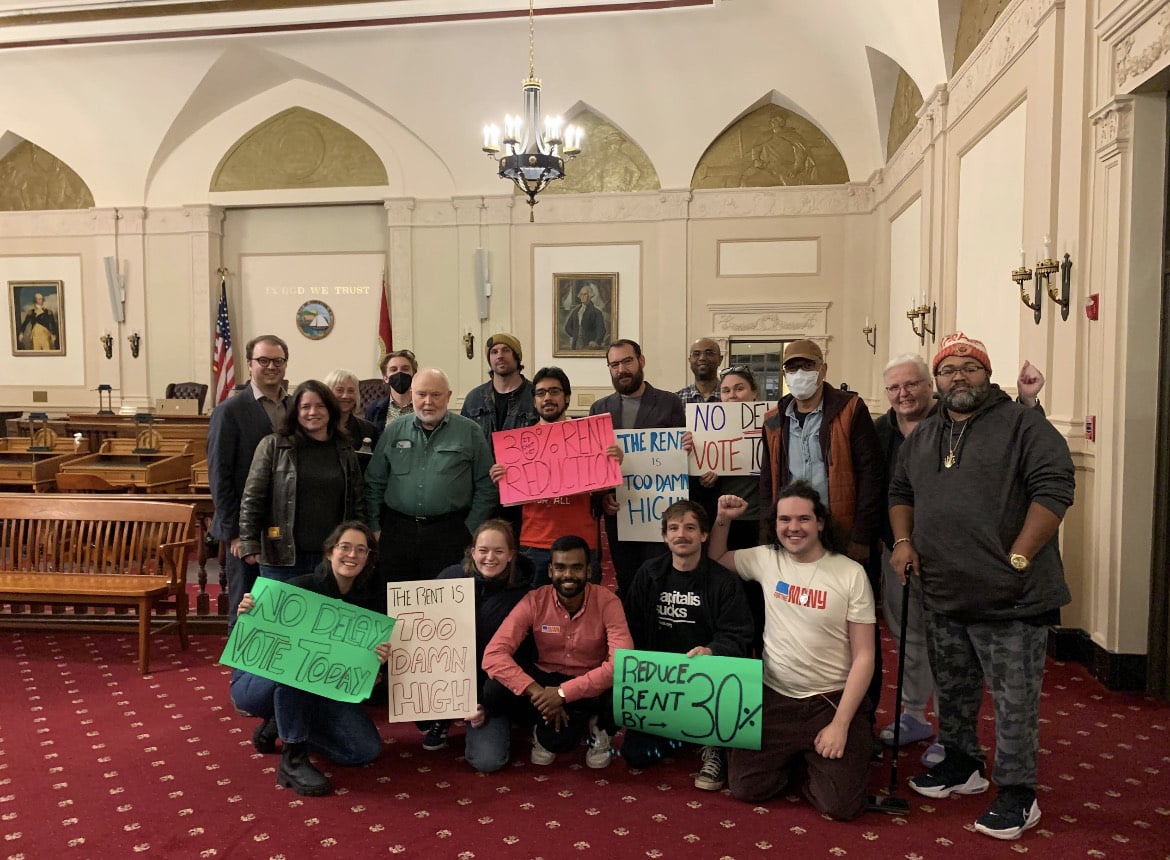
Then the COVID19 pandemic struck, supercharging Kingston’s already booming real estate market. Stony Run changed hands yet again after E&M sold the property to a firm named Aker Companies. When she renewed her lease in 2021, she begrudgingly signed on to a 7.5 percent rent increase. Aker has not responded to a request for comment.
In the first couple years of the pandemic, Kingston had become the housing market with the most quickly increasing home prices in the country, according to the National Association of Realtors, as cited by multiple news sources. Rents were likewise rising stratospherically. This year, the median rent for a two-bedroom apartment in Kingston was $1,872—a 46.1 percent increase since Soto moved to the city. For many of Kingston’s residents, that’s enough to price them out of their homes. Though the area’s median income is about three-quarters that of New York City’s, it also has a poverty rate 40 percent higher, at 18.5 percent; 23 percent for families with children.
In the summer of 2022, Kingston was so untenable for renters that the city council took the unprecedented step of rent-stabilizing a portion of the city’s apartments, becoming the first municipality in New York outside of New York City and its neighboring counties to do so. Shortly after, Kingston went a step further: It became the first city ever in New York state to order a rent reduction. But two years later, the Kingston tenants living in the 1,200 or so rent stabilized apartments have not yet seen this reduction.
Opting In to Rent Stabilization
Kingston’s path to rent stabilization began in 2019, when the Housing Stability and Tenant Protection Act (HSTPA) passed the New York State Legislature. The HSTPA allowed any locality in the state to opt in to the Emergency Tenant Protection Act (ETPA) of 1974, which limits how often and how much landlords are allowed to raise rents under conditions of low vacancy. Prior to the HSTPA, only New York City and its surrounding counties were eligible to opt in.
Even before HSTPA’s passage, the Kingston Common Council had passed a nonbinding resolution expressing its support for expanding who could opt in to the ETPA. So, following the 2019 state legislative session, when groups like Citizen Action of New York, Mid-Hudson Valley DSA, as well as the local Kingston Tenants Union applied pressure on them, the city council and mayor renewed their support for stabilizing rents.
Under the ETPA, to opt in a municipality must first declare a housing emergency, which requires proving there is a vacancy rate of under 5 percent in buildings that are eligible for stabilization. Eligible buildings must have six or more units and have been built before 1974.
But determining how many of these buildings exist in Kingston and how many units in them were vacant proved more difficult than expected. Kingston initially contracted with a nonprofit research group called the Center for Governmental Research. They released a survey in February of 2020 that found a 6.7 percent vacancy rate. But the survey reported a low response rate by landlords, and the researchers confirmed they had not verified all the responses in person.
Residents, organizers, and city officials alike were dismayed by the results, which they claimed simply didn’t match what tenants were facing in their day to day lives. “We firmly believe that there were responses received from landlords that were absolutely not an accurate reflection of what the vacancy rates were in the property,” Rebecca Garrard, the legislative director of Citizen Action of New York, told Next City.
Kingston Mayor Steve Noble said that he was “personally disappointed” during a meeting of the Common Council’s Laws and Rules Committee, as there was clearly a lack of affordable options for many Kingston residents. Then–council Majority Leader Reynolds Scott-Childress also questioned the accuracy of the study, while finding fault with the ETPA itself for relying on landlords to self-report.
The combination of methodological uncertainty and an unaffordable reality was enough to prompt the city to agree to conduct a new survey—this time done by the city itself, with in-person verification, and with enforcement of the ETPA stipulation that there would be considered zero percent vacancy in any buildings whose owners did not respond to the survey.
The second survey was published in June of 2022, after the COVID-19 crisis had dramatically worsened Kingston’s already dire affordability crisis. The survey found a 1.57 percent vacancy rate, well below the 5 percent threshold for opting into ETPA. By the end of July, the Kingston Common Council voted 7–1 to declare a housing emergency and implement rent stabilization measures on eligible buildings.
Rising Rents in an In-Between Time
The response from owners to the emergency declaration was swift. A landlord trade group called the Hudson Valley Property Owners Association sued the city to block rent stabilization, claiming the survey was inaccurate.
After rent stabilization is passed, but before a rent guidelines board is formed and sets the allowable rent increases, it is the “long-standing practice” to freeze rents in place says veteran tenant organizer Michael McKee. After all, according to the law, the board’s decision will be retroactive to the date of enactment, so any rent increases above the determined amount would need to be paid back anyway. HVPOA spokesperson Richard Lanzarone wrote in an email that despite its suit, it advised its members to begin freezing rents and implementing other provisions of the law as of Aug. 1, 2022.
However, most tenants in Kingston were not aware of this, and shortly after the city opted in to rent stabilization, Carolina Soto and her neighbors were pressured to sign what she calls a “poison pen letter,” which asserted that if they didn’t agree to a 35 percent rent increase within two weeks, Aker Companies’ next offer would be a 50 percent increase, and if they still refused, they would not be offered further leases. The letter did not follow the ETPA in terms of process—for example, it did not arrive by certified mail, have the required “Tenants Right’s Rider” attached, or offer one- and two-year lease options. (Aker is not a member of HVPOA, and did not reply to repeated requests for comment.)
When Soto and her neighbors sought legal advice from city officials, no one would advise them as to whether ETPA would protect them from these rent hikes while it was tied up in court, she recounts. She and many of her neighbors signed the letter (but not actual new leases). “We didn’t want to take the chance,” she says. “What if ETPA didn’t stand? What if my rent went up to $2,000 instead of a 35 percent increase?”
Passing a Rent Reduction
Although they signed the letters in August 2022, Soto and her neighbors still wanted to push back against their landlord’s behavior, so with the support of June Nemon, an organizer with For the Many, a grassroots group that provided critical support to the ETPA campaign in Kingston, as well as Citizen Action, she and her neighbors formed the Stony Run Tenants Union, which proved critical in shaping how rent stabilization would be implemented in Kingston.
The union first coalesced around fighting for repairs. The progress they made engaged even more Stony Run residents, and a base formed of roughly 60 people that the tenants union was able to mobilize for the next stage of the rent stabilization process.
Under the ETPA, a quasi-legislative body called a rent guidelines board votes on how much landlords are allowed to adjust their rents year to year. The members of a rent guidelines board are appointed by the city council, and then approved by the New York State Division of Housing and Community Renewal.
At the same time that the Kingston tenants were fighting for repairs, they, as well as other tenants across the city, were applying en masse to positions on the rent guidelines board. According to the ETPA, a rent guidelines board should have two tenant advocates, two real estate industry advocates, and five members representing the public. In the absence of a recruitment campaign of equal magnitude from the real estate lobby (a mistake that organizers say the lobby has learned from), Kingston tenants and organizers were able to establish a tenant-friendly rent guidelines board. Carolina Soto was appointed as one of the tenant advocates.
Prior to Kingston, the most pro-tenant action a rent guidelines board had taken in New York’s history of rent stabilization was freezing rents, and that rarely. Kingston’s tenants wanted to go one step further. Rent had gone up so much in such a short time, they wanted to press for a rent reduction. They asked McKee for advice and he said there was nothing in the law to prevent it.
In the three rent guidelines board meetings open to public comment that followed, Kingston tenants, including the residents of Stony Run, turned out in droves. With rents having almost doubled in the five years prior, tenant advocates went in demanding what was in their mind a modest 30 percent reduction.
On Nov. 9, 2020, the Kingston Rent Guidelines Board issued its first guidelines. First, it issued a one-time “fair market rent guideline,” a decision that allows the board to say that for a certain ‘lookback period” prior to ETPA opt-in, rent increases that went over a certain amount constituted a rent overcharge. The board decided that any rent increase of more than 16 percent between Jan. 1, 2019, and July 30, 2022, in buildings regulated by the ETPA constituted an overcharge. This decision empowered eligible tenants to file a fair market rent appeal to New York State’s Division of Housing and Community Renewal (DHCR), the agency tasked with enforcing the ETPA, to receive a refund.
Then the board settled on a 15 percent reduction from the previous rent for new one- and two-year leases. “It’s a kind of miracle,” says Soto, reflecting on the fact that tenants were able to win a reduction at all.
Kingston owners amended their lawsuit to include a challenge to the reduction soon after it was ordered. In February 2023, a county judge ruled that Kingston conducted its vacancy survey correctly and that its housing emergency declaration was lawful; however it ruled that the rent reduction went beyond the scope of the ETPA. The mixed-bag ruling didn’t satisfy either party, leading both to appeal the decision. In March 2024, five judges from New York’s second highest court unanimously upheld both Kingston’s emergency declaration and its rent reduction. “Nothing in the applicable statutory language explicitly requires that the Board adjust the rent upward rather than downward as petitioners claim, and petitioners’ argument as to why such a requirement should be implied is less than compelling,” wrote the court. The decision’s conclusion clearly stated that the November 2022 decision by the Rent Guidelines Board was “valid” and “affirmed,” and that the previous decision that the board should meet again to create new guidelines was overturned.
The Hudson Valley Property Owners Association asked to reargue the case in from of the Third Dept or for permission to appeal state’s highest court, The Third Dept gave permission for them to apply for an appeal to the Court of Appeals in August. The organization is still claiming that “the RGB decisions are not legally in effect” in the interim, per an email from HVPOA spokesperson Richard Lanzarone.
In the meantime, though organizers are emphasizing that per March 2024 ruling, the rent reduction is the law the land, they have been advising renters to pay the full rent on their current leases for now, to avoid having to pay one large sum in the event an appeal is heard and the reduction is overturned.
You Have Rights Now
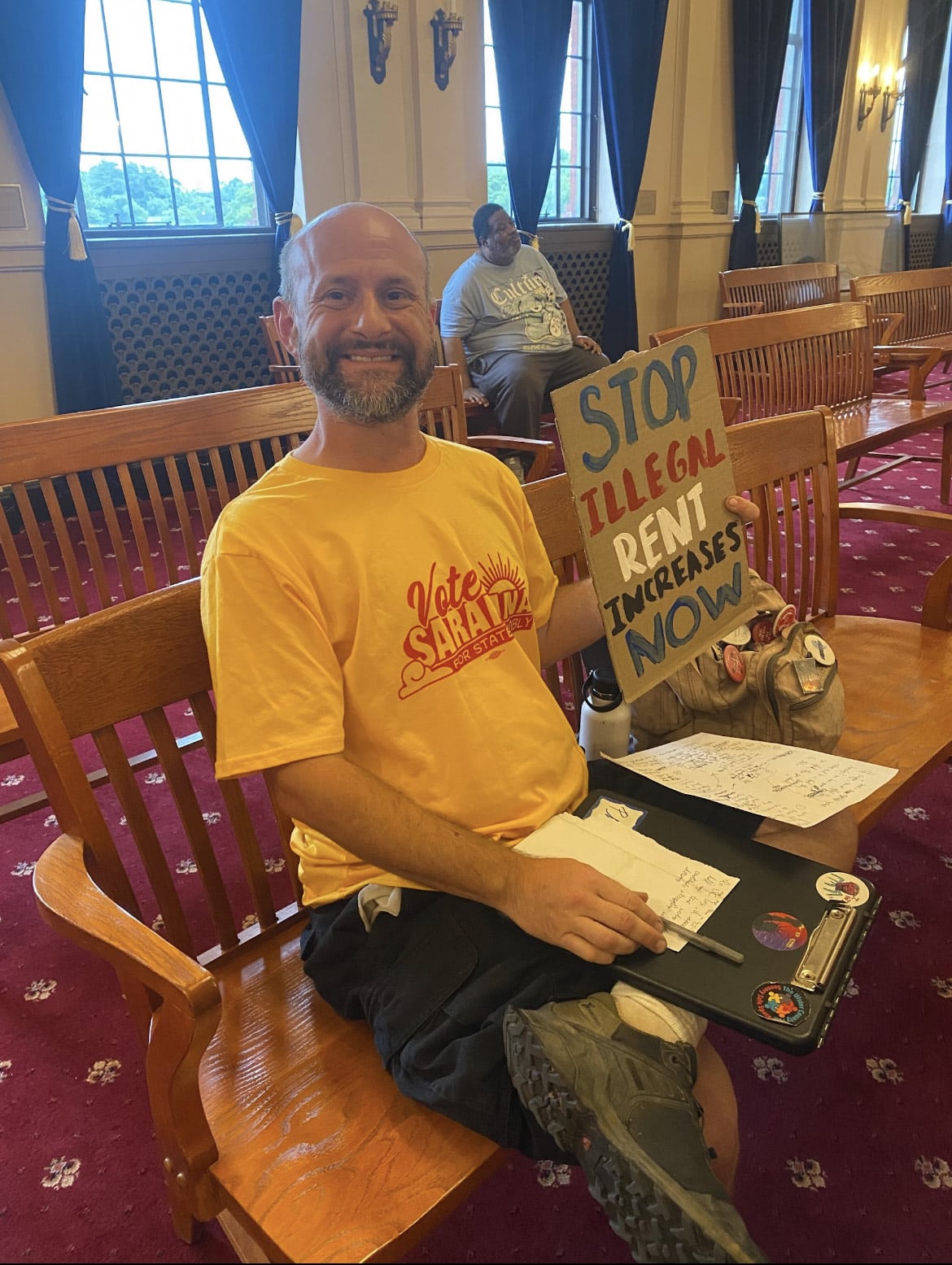
The challenges to implementing Kingston’s new rent guidelines underscore an aspect of the whole process that McKee and Nemon say has been the most time consuming for organizers: convincing tenants that their newfound rights exist at all and are enforceable. As it stands, enforcement of ETPA relies on tenants knowing they have rights and advocating for themselves. For a community for whom rent stabilization is brand-new and the benefits of which they haven’t yet fully felt, a deep skepticism has been most people’s first reaction.
“Our biggest problem in Kingston, in terms of implementation of ETPA was getting tenants to understand that they were no longer in a position where the landlord had all the power and whatever the landlord said you had to do,” says McKee. “It took a year and a half after the city voted to opt in just to make tenants understand that they now have the ability to say, ‘No, I don’t have to sign that illegal lease. I don’t have to pay that illegal rent increase.’”
As the first upstate municipality in New York to opt in to the ETPA, Kingston surprised the state, its own tenants, and the real estate lobby alike. That novelty came with some advantages and some disadvantages. Organizers believe the DHCR won’t be so quick to approve tenant-friendly rent guideline board members in the future, given the headache Kingston caused them. The real estate lobby will also surely be more invested in the composition of new rent guidelines boards in the future. McKee believes that future opt-in campaigns must begin with political education for tenants, so they are better prepared to advocate for themselves once they gain new protections.
Soto remains undeterred despite the delays and initial confusions. “I hope other towns go for it,” she says. “I’m thankful for it because my rent hasn’t gone up in the last couple of years. Everything else has gone up. I’m retired. I’m on a fixed income. I don’t have a lot of money.”
Bills are currently being written to reform the ETPA, including eliminating the vacancy survey, overhauling its administrative apparatus to be more able to proactively enforce the law, and widening the criteria for which buildings are eligible for coverage. Nemon believes this will be a priority of New York’s statewide housing movement come the next legislative session in Albany.
More and more municipalities opting into both the ETPA and the state’s Good Cause law could bring transformative change to New York’s tenant movement. “The more popular we can make these policies in other parts of the state, the more likely it is that we can win real statewide change,” Nemon says. “When people are protected from arbitrary eviction and there are limits on how much and how often their rent can go up, they’re more free to organize,” says McKee. As these protections spread across New York, it could help strengthen the kind of statewide coalition necessary to pass pro-tenant reforms through Albany.
“Real estate’s biggest nightmare has always been statewide rent control,” says McKee.
Editor’s Note: This article has been corrected to properly reflect where the idea for the rent reduction came from (Kingston tenants), update the status of HVPOA’s appeal request, and correct the spelling of Rebecca Garrard’s last name and one instance of Michael McKee’s last name. The article was also updated to correct an error in Kingston Mayor Noble’s first name.

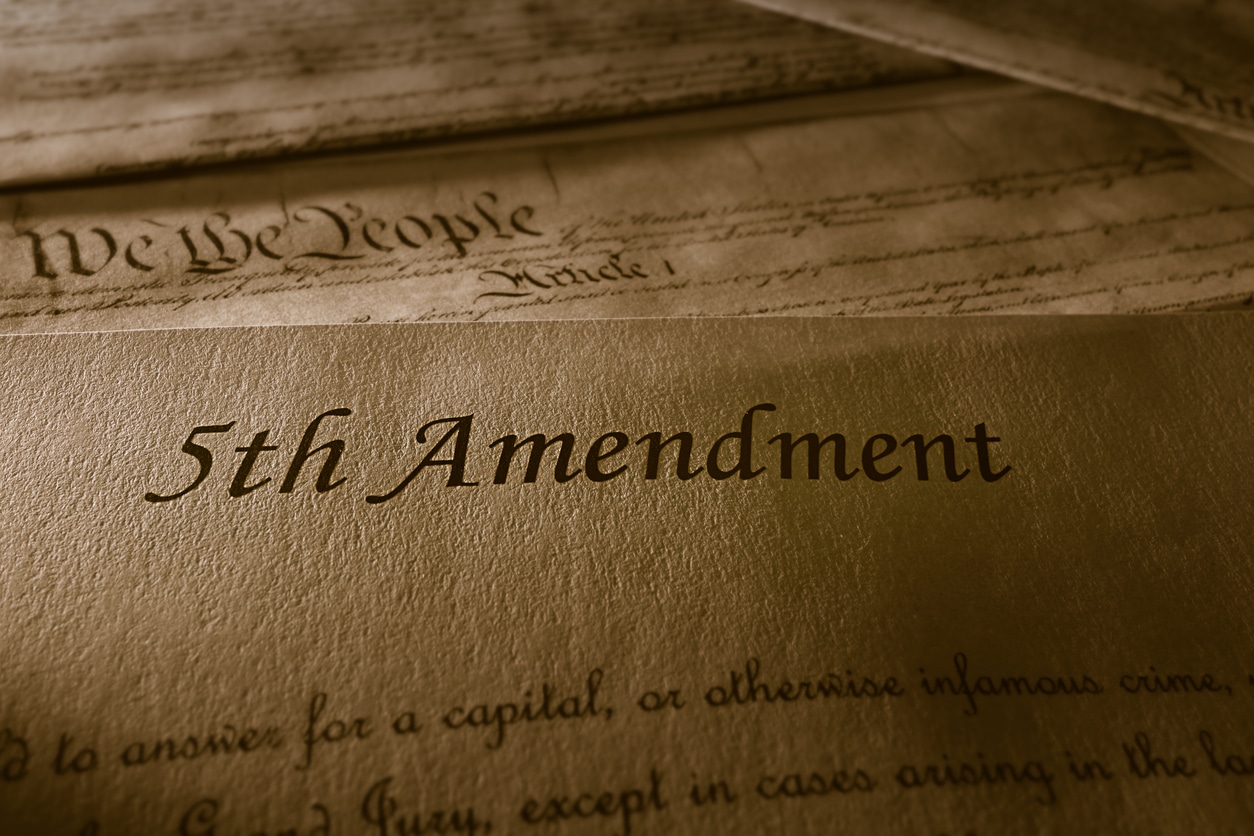
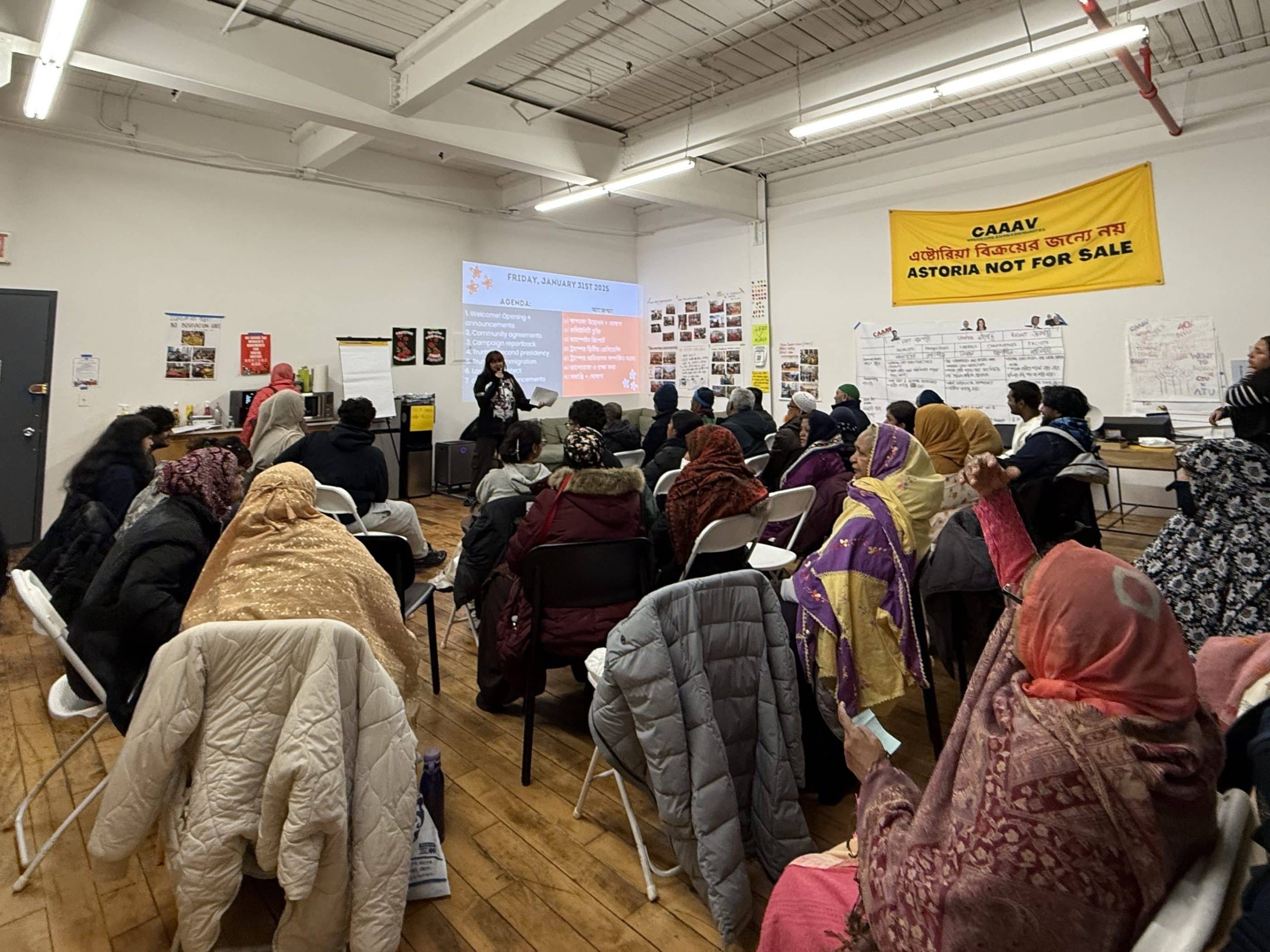
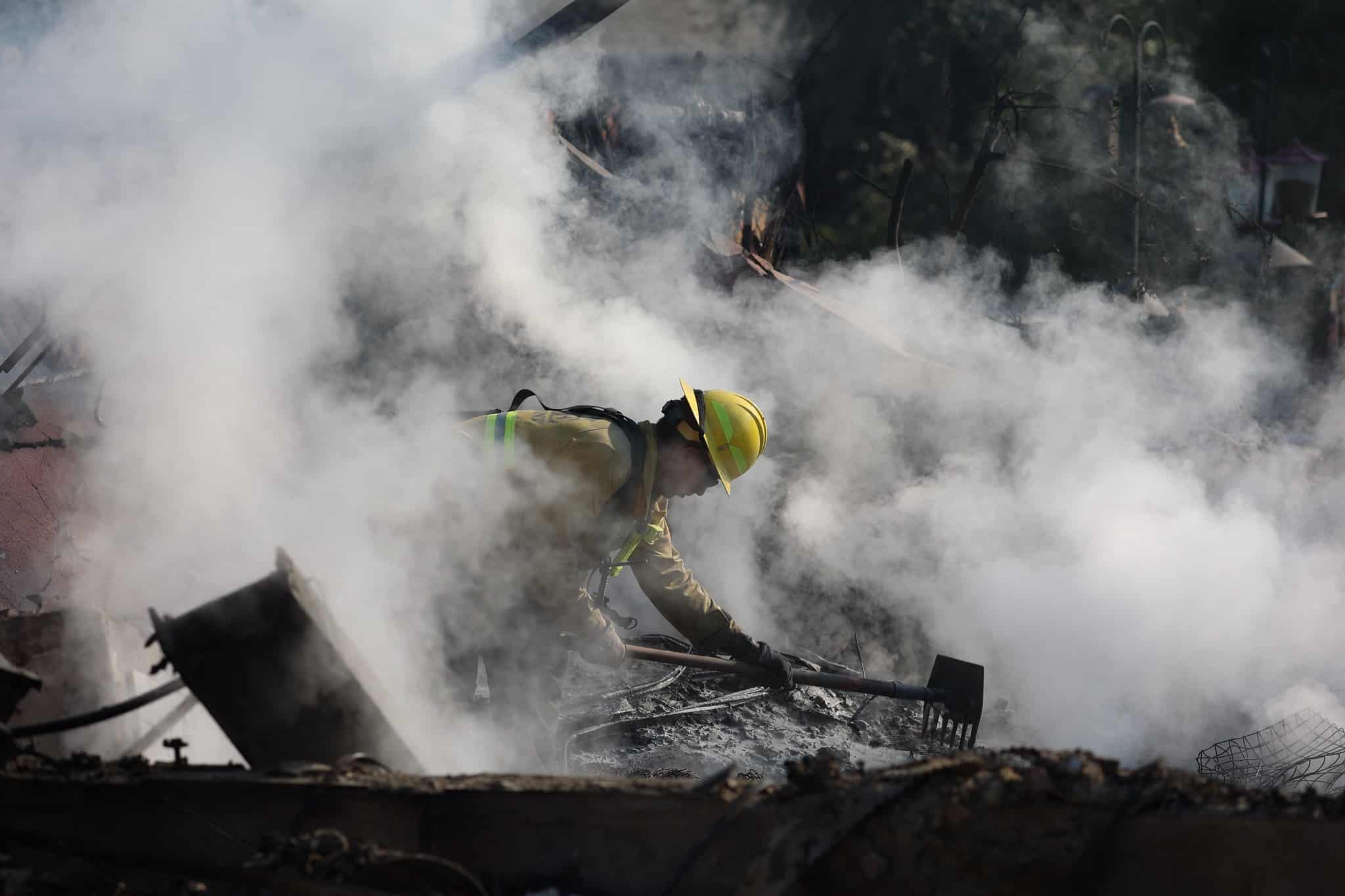
Fantastic reporting. Thanks so much!
Inspiring!!!!
Thank you Lucca for putting your heart and soul into this article. The truth, and we all know it, is that rents are too damn high and the situation is unsustainable for so many of Kingston (and the country’s) renters.
Stay tuned, we are fighting not only the landlords with their immense money for legal battles but also the ambivilent attitude of the state towards the Kingston Rent Guidelines board ruling.
The Kingston mayor’s name is Steve Noble, not Ryan.
Hi, Pam. Thanks for letting us know. We’ve updated the story and included a correction.
Rent stabilization, although disliked by economists, can be necessary when the rental market is unbalanced. As mentioned, one of its major shortcomings is that both tenants and landlords must know that the law exists, know how to comply and know how to enforce their rights.
A more fundamental approach would be to realize that the source of exorbitant rent increases are typically not related to the costs of operation and maintenance. Rather, they are related to an imbalance of supply and demand and this imbalance is reflected in the price of land. Because land values are created by the entire community (and not by individual landowners), these values should be returned to the community. Doing so reduces the benefits of landownership, thereby reducing land speculation and land prices. And increasing the return of community-created land values would allow for a reduction in the property tax rate applied to privately-created building values. This would make buildings cheaper to construct, improve and maintain over their useful lives. Thus, a Tax Shift (reduced tax on building values and higher tax on land values) could make both land and buildings more affordable. Best of all, neither landlords nor tenants need to understand or agree with the policy. The economic incentives are self-enforcing. Of course, rent stabilization may be necessary for a period of years during which a phase-in of land value return is implemented.